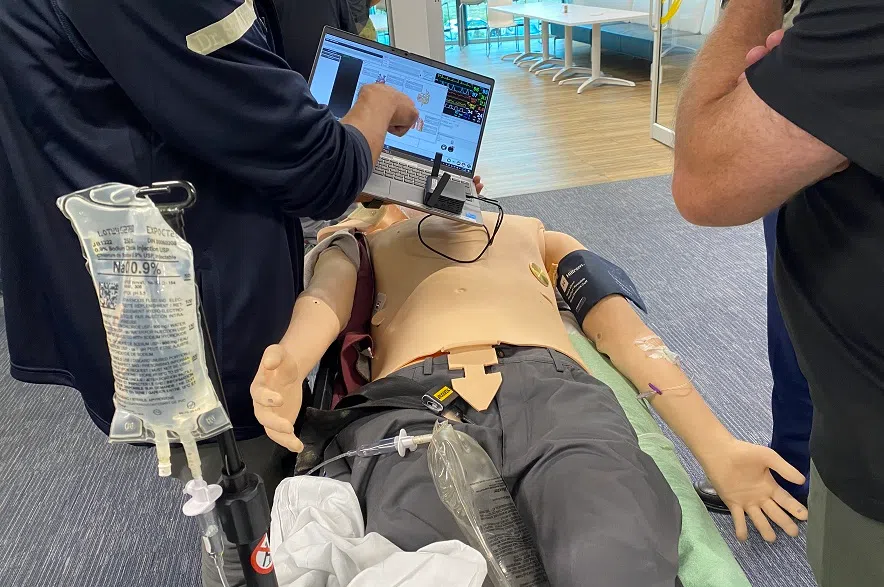The Royal University Hospital in Saskatoon is receiving a $300,000 donation from mining company Orano Canada.
This will help the hospital share its life-saving trauma care with rural communities up north.
$50,000 of the total donation will support the trauma team’s travels to Athabasca Denesuline First Nations and Athabasca Communities that are closest to Orano Canada’s McClean Lake mill, 850 km northeast of Saskatoon.
The Royal University Hospital (RUH) also received a new training mannequin through the donation.
The up-to-date SimMan mannequin can bleed, cry, moan in pain, speak to you if hooked up to a headset and its chest moves as it breathes.
Dr. Niroshan Sothilingam, Medical Director of the Province’s largest Level One Trauma Centre at RUH, said there are many training benefits to having this realistic mannequin .
“You have these realistic mannequins to help you troubleshoot the work you do,” he said. “There’s good evidence to say that this is very good training.”
The Royal University Hospital in Saskatoon has a brand new state of the art trauma response training mannequin.
As you can hear in the video the mannequin can respond to pain. @CKOMNews pic.twitter.com/nImiqx4Rhx
— Will Mandzuk (@WMandzuk) September 12, 2024
The Trauma Team program that goes up north is fairly new. Sothilingam said this a great way to build confidence in physicians in these communities.
Not only will this training mannequin be made available to first responders up north but it will also be made available to emergency services in the city like Saskatchewan Air Ambulance, Stars and Medavie if needed.
“A lot of these other programs have mannequins of their own, but trauma’s not an isolated field,” he said. “We include everybody … so this mannequin will be used to train people in the ICU, in the emergency room.”
This mannequin is the latest in a very impressive line of trauma training mannequins.
Sothilingam said this mannequin is a fairly substantial upgrade over the current ones.
“(It’s) just a lot more realistic, even the face is a lot more realistic, the sweating, the bleeding is a little bit more realistic,” he said. “A lot of it has to do with being very precise in the way it works compared to a real person.”
Sothilingam said being able to insert IV’s, running fluids and putting catheters in is a brand new feature as well.
Read More:
- 14 new internationally trained docs now working in rural Sask.
- ‘Activate those physicians:’ Sask. offers more money to family doctors to improve patient access
- What you need to know about Saskatchewan’s first urgent care centre
The mannequin can even be shocked if it enters cardiac arrest to regulate the heart rate.
Those controlling the mannequin can also change something in the middle of an exercise to throw a curveball at those who are working on the figure.
This was the first time that Jennifer Molloy, CEO, RUH Foundation saw the device.
She said the feedback was the feature that stood out the most to her.
“The person being able to speak through the mannequin to the health care providers is a really great way to provide that feedback,” said Molloy. “It’s enhancing not just the hands on care but as well as that emotional piece as well as that communication piece that you need to rely on when treating patients.”
RUH approached Jim Corman, President and CEO of Orano Canada, about partnering up on this.
“This new opportunity came forward to us earlier last year,” said Corman. “We saw a huge benefit in what the program was going to do in terms of the training of responders in rural communities.”
Corman also said that Orano Canada and RUH have been partners for a few decades now.











